Safety Results: Crop Protection Products

Here you will find study summaries concerning the human and environmental safety of many of our active substances that have been evaluated by the European Food Safety Authority (EFSA). This list is updated on a rolling basis.
In case you would like to have access to full Crop Protection safety study reports submitted to and evaluated by regulatory authorities or are interested in further information about the safety of crop protection products in our worldwide portfolio, please get in touch with us by filling out this request form and by accepting our Terms and Conditions for Access to Crop Protection Active Substance, Crop Protection Products and GM seeds and traits Study Documents.
Be aware that we do not provide study documents to those with competing interests (including but not limited to crop protection product companies).
Terms and Conditions
The download of study summaries is subject to our Terms and Conditions for Access to Crop Protection Active Substances, Crop Protection Products, and GM seeds and traits Study Documents. Any use of Study Documents or their content for regulatory or any other commercial purpose is prohibited. Distribution, reproduction and/or publication can be subject to consent.

Study reports can be quite long and not always easy to understand. To help you with reading and understanding, this guide will explain the most important parts and sections of a study report.
Please select an active substance:
Fungicides

Bacillus amyloliquefaciens strain QST 713, better known under the brand family of Serenade®, is the leading biological used against pathogenic organisms like fungi and bacteria. Based on a naturally occurring strain, Serenade is exempt from residues and can be applied until harvest time. So farmers use QST 713 as part of tailored solutions in order to reduce the chemical load or manage residues in Fruit and Vegetables. In bacterial disease management, Serenade® is an alternative to antibiotics and replaces coppers sprays. Serenade® applied to the soil activates the plant growth to increased yield and harvest quality. The Serenade® brand family is registered for a wide range of crops and diseases and is commercial in over 50 countries globally. (note: Bacillus amyloliquefaciens strain QST 713 formerly known as Bacillus subtilis strain QST 713).
Active Substance: bacillus amyloliquefaciens strain QST 713
Summary documentation (2015) – Effects on non-target organisms - bacillus amyloliquefaciens
Summary documentation (revision 2018) – Effects on non-target organisms - bacillus amyloliquefaciens
Summary documentation (July 2015) – Metabolism and Residue studies - bacillus amyloliquefaciens
Summary documentation (September 2015) – Metabolism and Residue studies - bacillus amyloliquefaciens
Formulation: Serenade ASO
Summary documentation (2015) – Fate and behavior in the environment – Serenade ASO
Summary documentation (2015) – Rationale to waive residue studies on MPCP – Serenade ASO
Summary documentation (2015) – Summary and evaluation of environmental impact – Serenade ASO

Fenhexamid, a fungicide known under Bayer’s brand name Teldor*, has been delivering Botrytis control on a variety of fruits and vegetables including grapes and soft fruits for almost two decades now. Fenhexamid is a crucial alternation partner in disease resistance management programs and is best used in a preventative program. It inhibits the germ tube growth and prevents the penetration of the fungus into the plant tissue resulting in effective and long-lasting protection.
Active Substance: fenhexamid
Summary of the ecotoxicological studies - fenhexamid
Summary of the fate and behaviour in the environment studies - fenhexamid
Summary of the metabolism and residues studies - fenhexamid
Summary of the toxicological and toxicokinetic studies - fenhexamid
List of additional safety relevant documents for Fenhexamid
Formulation: fenhexamid WG 50 (500 g/kg)
Summary of the ecotoxicological studies - fenhexamid WG 50 (500 g/kg)
Summary of the fate and behaviour in the environment studies - fenhexamid WG 50 (500 g/kg)
Summary of the metabolism and residues studies - fenhexamid WG 50 (500 g/kg)
Summary of the toxicological studies and exposure data - fenhexamid WG 50 (500 g/kg)

Fluopicolide, known under brands like Infinito® or Profiler®, is a unique mode of action focusing on the control of the aggressive oomycetes fungi around the globe. Major application are foliar treatments in potatoes, grapes and vegetables, but also seed treatment uses are registered.
With its strong anti-sporulant activity, Fluopicolide is already at relatively low dose rates highly effective on Phytophthora and Downy Mildew pathogens. Fluopicolide is further one of two effective fungicides to control tuber blight in potatoes and to control downy mildew in hops.
Active substance: fluopicolide
Summary of the residues in or on treated products, food and feed for fluopicolide
Summary of the fate and behaviour in the environment for fluopicolide - Part 1
Summary of the toxicological and metabolism studies for fluopicolide - Part 2
Summary of the toxicological and metabolism studies for fluopicolide - Part 1
Summary of the fate and behaviour in the environment for fluopicolide - Part 3
Summary of the fate and behaviour in the environment for fluopicolide - Part 2
Summary of the ecotoxicological studies for fluopicolide
Formulation: fluopicolide + propamocarb-HCl SC 687.5 (62.5+625 g/L)
Formulation: fluopicolide + fluoxastrobin FS 350 (200+150 g/L)
Summary of the ecotoxicological studies - Fluopicolide + fluoxastrobin FS 350 (200+150 g/L)
Summary of the toxicological studies for fluopicolide + fluoxastrobin FS 350 (200+150 g/L)

Fluopyram is a versatile and outstanding fungicide and nematicide.
As a multi-crop, top-tier efficacy SDHI fungicide it is known under brand names such as Luna® and Propulse®. The Luna® portfolio allows to significantly reduce Fruit & Vegetable losses while Propulse® stands for yield increase in many broad acre crops.
The nematicide Velum® (sold under the brand name Verango®, e.g. in LATAM) is a true innovation for the global soil-applied nematode market. This nematicide with its new mode of action (SDHI) provides a unique combination of powerful, long-lasting and reliable efficacy against all relevant nematode species.
Bayer’s fluopyram products are registered and sold in more than 80 countries and used on more than 80 different crops. They uniquely control fruit & vegetable “latent diseases” and key nematodes in the field, stopping diseases from developing after harvest and resulting in better produce storability and longer shelf-life.
Due to its high level of efficacy, fluopyram can often replace older chemistry, resulting in reduced chemical loading per hectare and a much safer profile for the operator and the environment than traditional standards.
Active Substance: fluopyram
Summary of the ecotoxicological studies for fluopyram – Part 2
Summary of the toxicological and metabolism studies for fluopyram -Part 1
Summary of the toxicological and metabolism studies for fluopyram -Part 2 update im July
Summary of the residues in or on treated products, food and feed for fluopyram
1st amendment of summary of the ecotoxicological studies for fluopyram – Part 1
1st amendment of summary of the fate and behaviour in the environment for fluopyram
Formulation: fluopyram SC 500 (500 g/L)
Summary of the fate and behaviour in the environment fluopyram SC 500 (500 g/L)
Summary of the toxicological studies for fluopyram SC 500 (500 g/L)
Summary of the residues in or on treated products, food and feed – Fluopyram SC 500 (500 g/L)
1st amendment of summary of the ecotoxicological studies for fluopyram SC 500 g/L
Formulation: fluopyram + trifloxystrobin SC 500 (250+250 g/L)
Summary of the toxicological studies for fluopyram + trifloxystrobin SC 500 (250 + 250 g/L)
Formulation: bixafen + fluopyram + prothioconazole EC 260 (65+65+130 g/L)

Fluoxastrobin is a systemic strobilurin fungicide that provides broad-spectrum disease control and excellent plant health properties. The compound can be applied as foliar fungicide, primarily in combination with other Bayer proprietary fungicides, or as a seed treatment. Core target crops are cereals, corn, potatoes and vegetables. The major brand for foliar application is Fandango®, for seed treatment application Scenic®.
Active Substance: fluoxastrobin
Summary of the ecotoxicological studies - fluoxastrobin
Summary of the fate and behaviour in the environment studies - fluoxastrobin
Summary of the residues in or on treated products, food and feed studies - fluoxastrobin
Summary of the toxicological and metabolism studies - fluoxastrobin
Formulation: bixafen + fluoxastrobin + prothioconazole EC 190 (40+50+100 g/L)
Formulation: fluoxastrobin + prothioconazole EC 200 (100 + 100 g/l)
Summary of the ecotoxicological studies - fluoxastrobin + prothioconazole EC 200 (100+100 g/L)
Summary of the toxicological studies - Fluoxastrobin + prothioconazole EC 200 (100+100 g/L)

Fosetyl, known under the major brand Aliette, is a Plant Natural Defence enhancer: Fosetyl based solutions slow down significantly the invasion of the pathogen by reinforcing the defensive reactions of the plants, sealing-off the invading organism. With such a unique mode of action, it is highly unlikely to face resistance development. Thanks to its specific bioavailability properties new shoots, new growths of the plants are also protected. Fosetyl solutions are used worldwide, mostly in Grapes, but also Citrus, Pome fruits, Solanacees, Berries, and a number of other fruits and vegetables, for the protection they provide against major fungal and bacterial diseases.
Active Substance: fosetyl-aluminium
Summary of the ecotoxicological studies - fosetyl-aluminium
Summary of the fate and behaviour in the environment studies - fosetyl-aluminium
Summary of the residues in or on treated products, food and feed studies - fosetyl-aluminium
Summary of the toxicological and metabolism studies - fosetyl-aluminium
Formulation: fosetyl-aluminium + fluopicolide WG 71.11 (666.7 + 44.4 g/kg)
Summary of the toxicological studies - fosetyl-aluminium + fluopicolide WG 71.11 (666.7 + 44.4 g/kg)
Formulation: fosetyl-aluminium WG 80 (800 g/kg)
Summary of the ecotoxicological studies - fosetyl-aluminium WG 80 (800 g/kg)
Summary of the fate and behaviour in the environment studies - fosetyl-aluminium WG 80 (800 g/kg)
Summary of the toxicological studies - fosetyl-aluminium WG 80 (800 g/kg)
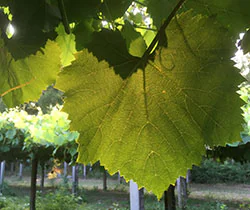
Iprovalicarb, known under the major Melody brand, is a fungicide used on Grapes, Potatoes and Tomatoes mainly, to protect those crops from Downy Mildew & Late Blight losses (these diseases could result in 80-100% harvest loss). Iprovalicarb combines excellent control of oomycete fungi with high plant compatibility and shows a strong potency in controlling infections that have just occurred (24-48h before), providing the flexibility to the growers to catch up a dangerous situation when they were in no position to prevent it due to circumstances out of his control (weather, organizational constraints… ).
Active Substance: iprovalicarb
Summary of the ecotoxicological studies - iprovalicarb
Summary of the fate and behaviour in the environment studies - iprovalicarb
Summary of the metabolism and residues studies - iprovalicarb
Summary of the toxicological and toxicokinetic studies - iprovalicarb
List of additional safety relevant documents for iprovalicarb
Formulation: iprovalicarb + folpet WG 65.3 (90+563 g/kg)
Summary of the ecotoxicological studies - iprovalicarb & folpet WG 65.3 (90+563 g/kg)
Summary of the metabolism and residues studies - iprovalicarb & folpet WG 65.3 (90+563 g/kg)
Summary of the toxicological studies and exposure data - iprovalicarb & folpet WG 65.3 (90+563 g/kg)

Isoflucypram is the most recent innovative fungicide from Bayer’s crop protection pipeline. It shows excellent efficacy against a broad variety of cereal diseases, like leaf spots and rusts. Untreated those diseases are strongly affecting the quality and yield of cereal growers world-wide, yield losses of up to 40% are possible. Despite its low application rate, Isoflucypram offers long-lasting protection and unmatched yield security to our customers.
Active Substance: isoflucypram
Summary of the ecotoxicological studies - isoflucypram
Summary of the fate and behaviour in the environment studies - isoflucypram
Summary of the residues in or on treated products, food and feed studies - isoflucypram
Summary of the toxicological and metabolism studies - isoflucypram
Formulation: isoflucypram EC 50 (50 g/L)
Summary of the ecotoxicological studies - isoflucypram EC 50 (50 g/L)
Summary of the fate and behaviour in the environment studies - isoflucypram EC 50 (50 g/L)
Summary of the toxicological studies - isoflucypram EC 50 (50 g/L)

Propineb known under the major brand Antracol® is one of the three big multi-site fungicides in the world, mainly for application in horticulture as well as in rice in more than 50 countries in Asia and Latin America. Besides the fungicidal activity against Anthracnosis and Leaf spots, Propineb’s Zinc content results in a plant strengthening, visible greening effect. Multi-sites like Antracol® are part of Bayer’s resistance management programs and to close portfolio gaps.
Active Substance: propineb
Summary of the ecotoxicological studies - Propineb
Summary of the fate and behaviour in the environment studies - propineb
Summary of the residues in or on treated products, food and feed studies - Propineb
Summary of the toxicological and metabolism studies - propineb
List of additional safety relevant documents for propineb
Formulation: propineb WG 70 (700g/kg)
Summary of the ecotoxicological studies - propineb WG 70 (700g/kg)
Summary of the fate and behaviour in the environment studies - propineb WG 70 (700g/kg)
Summary of the residues in or on treated products, food and feed studies - propineb WG 70 (700g/kg)
Summary of the toxicological studies - propineb WG 70 (700g/kg)

Prothioconazole known under the major brands Prosaro®, Proline® and Fox®, is one of the largest crop protection assets at Bayer, considered an internal blockbuster and the most important DMI fungicide for growers around the world in controlling the most devastating fungal diseases in their crops. Prothioconazole is registered in over 60 countries and offers unprecedented control of Fusarium head blight (FHB) in cereals, and is the best performing DMI fungicide against the largest fungal pathogen Asian Soybean Rust (ASR) in soybeans. It is also considered a foundational mixture partner and necessary resistance management tool.
Active Substance: prothioconazole
Summary of the ecotoxicological studies - Prothioconazole
Summary of the fate and behaviour in the environment studies - Prothioconazole
Summary of the residues in or on treated products, food and feed studies - Prothioconazole
Summary of the toxicological and metabolism studies - prothioconazole
Formulation: bixafen + prothioconazole EC 225 (75 + 150 g/l)
Summary of the ecotoxicological studies - Bixafen + prothioconazole EC 225 (75 + 150 g/L)
Summary of the toxicological studies - Bixafen + prothioconazole EC 225 (75 + 150 g/L)
Formulation: prothioconazole FS 100 (100 g/l)
Summary of the ecotoxicological studies - Prothioconazole FS 100 (100 g/L)
Summary of the fate and behaviour in the environment studies - Prothioconazole FS 100 (100 g/L)
Summary of the toxicological studies - Prothioconazole FS 100 (100 g/L)

Spiroxamine is known under brand names such as Prosper®, Input® and Impulse®. Farmers use this fungicide to protect e.g., grain fields or vineyards, from devastating fungal diseases. In this way, spiroxamine enables better economic success for farmers and higher quality of these crops for consumers of bread and grapes. Under the Impulse® brand, Spiroxamine helps banana growers around the world to protect their crops from "Black Sigatoka", an aggressive fungal disease that in the past almost destroyed all banana plantations worldwide. Spiroxamine is registered and commercially available in 86 countries. On the market for more than 25 years, Spiroxamine is an essential component for effective resistance management programs and thus remains an important tool for growers to effectively and economically control relevant pathogens.
Active Substance: spiroxamine
Summary of the residues in or on treated products, food and feed for spiroxamine
Summary of the ecotoxicological studies for spiroxamine
Summary of the toxicological and metabolism studies for spiroxamine – Part 1
Summary of the fate and behaviour in the environment for spiroxamine
Summary of the toxicological and metabolism studies for spiroxamine – Part 2
Formulation: spiroxamine EC 500
Summary of the residues in or on treated products, food and feed spiroxamine EC 500 (500 g/L)
Summary of the fate and behaviour in the environment spiroxamine EC 500 (500 g/L)
Summary of the ecotoxicological studies spiroxamine EC 500 (500 g/L)
Summary of the toxicological studies for spiroxamine EC 500 (500 g/L)
Formulation: prothioconazole + spiroxamine EC 460 (160+300 g/L)
Summary of the ecotoxicological studies prothioconazole + spiroxamine EC 460 (160+300 g/L)
Summary of the toxicological studies for prothioconazole + spiroxamine EC 460 (160+300 g/L)

Many Trifloxystrobin-containing products are marketed in more than 100 countries and in all major crop groups. The broad range of diseases which are controlled by these products, the additional beneficial plant physiological effects as well as the high crop safety make Trifloxystrobin a multipurpose asset for farmers. Today Trifloxystrobin is used extensively in soybean with the brands Fox, Cripton and Delaro, followed by Horticulture with the brand Nativo.
Active Substance: trifloxystrobin
Summary of the ecotoxicological studies - trifloxystrobin
Summary of the fate and behaviour in the environment studies - trifloxystrobin
Summary of the residues in or on treated products, food and feed studies - trifloxystrobin
Summary of the toxicological and metabolism studies - trifloxystrobin
List additional safety relevant documents for trifloxystrobin
Formulation: trifloxystrobin WG 50 (500g/kg)
Summary of the ecotoxicological studies - trifloxystrobin WG 50 (500g/kg)
Summary of the fate and behaviour in the environment studies - trifloxystrobin WG 50 (500 g/kg)
Summary of the toxicological studies - trifloxystrobin WG 50
Insecticides

Deltamethrin is an insecticide and protects a wide range of crops globally including cereals, vegetables, fruits and ornamentals, grown in open field and/or under protection against many important pests causing economic damage. Deltamethrin is used in agriculture, timber protection, vector control and more. Deltamethrin is a non-systemic insecticide which acts on the insect by contact and ingestion. Deltamethrin is not systemic within plants.
Active Substance: deltamethrin
Summary of the ecotoxicological studies - deltamethrin
Summary of the fate and behaviour in the environment studies - deltamethrin
Summary of the residues in or on treated products, food and feed studies - deltamethrin
Summary of the toxicological and metabolism studies - deltamethrin
Formulation: deltamethrin EW 15 (15 g/l)
Summary of the ecotoxicological studies - deltamethrin EW 15 (15 g/L)
Summary of the fate and behavior in the environment studies - deltamethrin EW 15 (15 g/L)
Summary of the toxicological studies - deltamethrin EW 15 (15 g/L)

Flupyradifurone known under the major brand SIVANTO® is the latest sucking insecticide in Bayer’s crop protection portfolio for worldwide use. This innovative compound is primarily for use in a wide variety of fruit and vegetable crops as well as plantation (citrus, coffee, cocoa), tropical fruits and defined broad acre crops. It performs well against a large spectrum of mostly sucking pests including aphids, whiteflies, psyllids, scales, scirtothrips, leafhoppers, mealy bugs, coffee leaf miner, lygus bugs and cocoa mirids. SIVANTO® meets the diverse safety needs in modern applied agriculture and fulfills today’s regulatory requirements for an IPM (Integrated Pest Management) friendly insecticide.
Active Substance flupyradifurone
Summary of the ecotoxicological studies - flupyradifurone
Summary of the fate and behaviour in the environment studies - flupyradifurone
Summary of the metabolism and residues studies (part 1 of 3) - flupyradifurone
Summary of the metabolism and residues studies (part 2 of 3) - flupyradifurone
Summary of the metabolism and residues studies (part 3 of 3) - flupyradifurone
Summary of the toxicological and toxicokinetic studies - flupyradifurone
List of additional safety relevant documents submitted in non-EU countries for flupyradifurone
Formulation flupyradifurone SL 200
Summary of the ecotoxicological studies - flupyradifurone SL 200
Summary of the fate and behaviour in the environment studies - flupyradifurone SL 200
Summary of the toxicological studies and exposure data - flupyradifurone SL 200
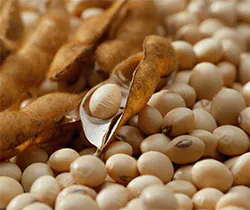
Imidacloprid known under the major brands Confidor®, Admire® for foliar or soil application or Gaucho® for seed treatment is our leading insecticide from the group of neonicotinoids. This chemical class revolutionized pest management on farms by replacing several sprays of older chemistry. Imidacloprid provides as soil-applied insecticide many benefits. The active substance is taken up by the plant to protect it from inside against attacks from harmful insects. Farmers around the world value the product in a wide range of crops with a broad spectrum of efficacy.
Imidacloprid safety studies
Imidacloprid bee studies - Compilation of study summaries
Risk assessment of Imidacloprid for soil organisms for the use as seed treatment in sugar beet
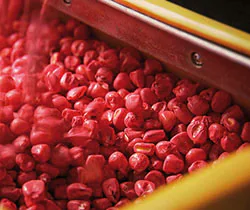
Methiocarb is known under the major brands Mesurol® for seed treatment on corn or slug baits used in a lot of crops. Mesurol as a seed treatment combines a bird repellent effect with frit fly control – which makes it unique.
Active Substance: methiocarb
Summary of the ecotoxicological studies - methiocarb
Summary of the fate and behaviour in the environment studies - methiocarb
Summary of the residues in or on treated products, food and feed studies - methiocarb
Summary of the toxicological and metabolism studies - methiocarb
Formulation: methiocarb FS 500 (500 g/l)
Summary of the ecotoxicological studies - methiocarb FS 500 (500 g/L)
Summary of the fate and behaviour in the environment studies - methiocarb FS 500 (500 g/L)
Summary of the toxicological studies - methiocarb FS 500 (500 g/L)

Spirotetramat, under the major brand MOVENTO®, is a unique insecticide of the ketoenol family that acts against a broad range of sucking insect pests, including scales, mealybugs, psylla, aphids, phylloxera, and whiteflies. MOVENTO® is primarily used in intensively grown crops like fruits and vegetables. With its unique mode of action, that once inside the leaf has a two-way systemicity moving to all areas of the plant, including new shoot, leaf and root tissues, it offers long-lasting efficacy and an excellent tool for resistance management and Integrated Pest Management (IPM).
Active Substance spirotetramat
Summary of the toxicological and toxicokinetic studies - spirotetramat
Summary of the metabolism and residues data - spirotetramat
Summary of the fate and behaviour in the environment studies - spirotetramat
Summary of the ecotoxicological studies - spirotetramat
Formulation spirotetramat OD 150
Summary of the toxicological studies and exposure data - spirotetramat OD 150
Summary of the ecotoxicological studies - spirotetramat OD 150
Summary of the metabolism and residues data - spirotetramat OD 150
Summary of the fate and behaviour in the environment studies - spirotetramat OD 150

Terpenoid Blend, known under the name Requiem prime, is a biological insecticide that delivers fast knockdown to sucking pests in horticultural crops throughout the season to improve the efficacy of pest management programs and increase marketability. It does not affect beneficial & pollinators and helps managing resistance.
Active Substance: Terpenoid blend QRD 460
Summary of the ecotoxicological studies - terpenoid blend
Summary of the fate and behaviour in the environment studies - terpenoid blend
Summary of the residues in or on treated products, food and feed studies - terpenoid blend
Summary of the toxicological and metabolism studies - terpenoid blend
Formulation: Requiem EC (QRD 452)
Summary of the ecotoxicological studies - terpenoid blend
Summary of the fate and behaviour in the environment studies - terpenoid blend
Summary of the residues in or on treated products, food and feed studies - terpenoid blend
Summary of the toxicological and metabolism studies - terpenoid blend

Thiacloprid known under the major brand Biscaya® or Calypso® is a neonicotinoid insecticide with a favorable bee safety profile. It is therefore especially used by oilseed rape farmers to control harmful insects in this highly bee attractive crop. Also fruit and vegetable & potato farmers value thiacloprid for controlling a wide range of sucking insects, but thiacloprid also effectively controls the lepidoperan pest codling moth. In cereals, the same as in the other crops, thiacloprid is an important part of the rotation of products with different modes of action to ensure sustainable pest management and follow resistance management guidelines.
Active Substance: thiacloprid
Summary of the ecotoxicological studies - thiacloprid
Summary of the fate and behaviour in the environment studies - thiacloprid
Summary of the residues in or on treated products, food and feed studies - thiacloprid
Summary of the toxicological and metabolism studies - thiacloprid
Formulation: thiacloprid FS 400 (400 g/l)
Summary of the ecotoxicological studies - thiacloprid FS 400 (400 g/L)
Summary of the fate and behaviour in the environment studies - thiacloprid FS 400 (400 g/L)
Summary of the toxicological studies - thiacloprid FS 400 (400 g/L)
Formulation: thiacloprid OD 240 (240 g/l)
Summary of the ecotoxicological studies - thiacloprid OD 240 (240g/L)
Summary of the fate and behaviour in the environment studies - thiacloprid OD 240 (240g/L)
Summary of the toxicological studies - thiacloprid OD 240 (240 g/L)
Herbicides

Aclonifen is a herbicide active introduced to the market in the 80s. It is used in many crops such as sunflower, potatoes and peas but also in multiple so called “minor crops” like onion, garlic, shallots, parsley, dill and others. Just recently, the use in Cereals was introduced for the first time. Aclonifen is applied in pre emergence of crops. Early post-emergence applications are also possible in some crops using a reduced dose rate. Through its novel mode of action (classified as group 32: SDS inhibitor) Aclonifen acts as a resistance breaker for difficult to control weeds, matter particularly relevant for Cereals. The control spectrum of the active covers many dicots but also grass weeds. Common brand names are Bandur and Challenge, as well as Mateno (combination with Flufenacet and Diflufenican) for Cereals.
Active Substance: aclonifen
Summary of the ecotoxicological studies - aclonifen
Summary of the fate and behaviour in the environment studies - aclonifen
Summary of the residues in or on treated products, food and feed studies - aclonifen
Summary of the toxicological and metabolism studies - aclonifen
Formulation: aclonifen SC 600 G
Summary of the ecotoxicological studies - aclonifen SC 600 G
Summary of the fate and behaviour in the environment studies - aclonifen SC 600 G
Summary of the residues in or on treated products, food and feed studies - aclonifen SC 600 G
Summary of the toxicological studies - aclonifen SC 600 G
Formulation: aclonifen + diflufenican SC 600 (500 + 100 g/L)
Summary of the ecotoxicological studies - aclonifen + diflufenican SC 600 (500 + 100 g/L)
Summary of the toxicological studies - aclonifen + diflufenican SC 600 (500 + 100 g/L)

Amidosulfuron is the component of brands like Gratil®, Hoestar®, Sekator® and Pacifica® Plus. It is used in cereals and pastures to control broadleaved weeds particularly Galium aparine, the most competitive dicot weed in European cereals and Rumex in pastures. Amidosulfuron belongs to the group of sulfonyl urea herbicides and is part of Bayer´s Integrated Weed Management program to maximize yield protection and to ensure sustainable future weed control for growers.
Active Substance: amidosulfuron
Summary of the ecotoxicological studies - amidosulfuron
Summary of the fate and behaviour in the environment studies - amidosulfuron
Summary of the residues in or on treated products, food and feed studies - amidosulfuron
Summary of the toxicological and metabolism studies - amidosulfuron
Formulation: amidosulfuron WG 75
Summary of the ecotoxicological studies - amidosulfuron WG 75
Summary of the fate and behaviour in the environment studies - amidosulfuron WG 75
Summary of the residues in or on treated products, food and feed studies - amidosulfuron WG 75
Summary of the toxicological studies - amidosulfuron WG 75
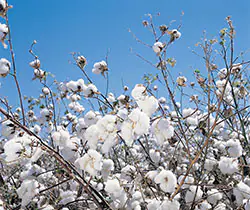
Ethephon is an important active ingredient used for plant growth regulation and registered in over 40 countries around the word. Important brands are Cerone®, Finish® and Ethrel®. Ethephon is a systemic plant growth regulator belonging to the phoshonate family. It is fastly absorbed by the plant and releases ethylene which is a natural plant hormone. Ethylene influences directly several physiological processes (i.e. ripening, maturation) and stimulates the production of endogenous ethylene. Ethephon is taking up by the leaves and is transported to the vegetal tissues and translocated from the leaves to the plant tissues. Progressively, it is transformed into ethylene in the plant, modifying the growth processes stimulating the synthesis of phenol and lignine.
Ethephon is used in cereals (wheat, barley, rye and triticale) to increase resistance to lodging through straw shortening and strengthening. On fruits and vegetables to promote fruit maturity (early and uniform ripening and coloring of mature fruits), on ornamentals to stimulate flowering and side branching and to reduce plant height. On cotton to promote uniform boll opening and enhance defoliation.
Active Substance: ethephon
Summary of the ecotoxicological studies - ethephon
Summary of the fate and behaviour in the environment studies - ethephon
Summary of the residues in or on treated products, food and feed studies - ethephon
Summary of the toxicological and metabolism studies - ethephon
Formulation: ethephon SL 480 (480 g/l)
Summary of the ecotoxicological studies - ethephon SL 480 g/L
Summary of the fate and behaviour in the environment studies - ethephon SL 480 g/L
Summary of the residues in or on treated products, food and feed studies - ethephon SL 480 g/L
Summary of the toxicological studies and exposure data - ethephon SL 480 g/L

When it comes to pre-emergence and early-post control of key grass weeds in cereals, Flufenacet is the farmers’ first choice. It offers excellent control of the most problematic weeds, especially grass weeds like Alopecurus (blackgrass), Lolium (ryegrass) and Apera species. Flufenacet is a key component of brands like Cadou®, Fosburi®, Liberator® and Bacara Forte®. As the key active ingredient for autumn applications, Flufenacet is part of Bayer`s Integrated Weed Management offering, providing farmers with agronomic solutions for optimized weed control and maximum yield protection.
Active Substance: flufenacet
Summary of the ecotoxicological studies - flufenacet
Summary of the fate and behavior in the environment studies - flufenacet
Summary of the residues in or on treated products, food and feed studies - flufenacet
Summary of the toxicological and metabolism studies - flufenacet
Formulation: diflufenican+flufenacet SC600 (200+400)G
Summary of the ecotoxicological studies - diflufenican+flufenacet SC600 (200+400 g/L)
Summary of the toxicological studies - diflufenican+flufenacet SC600 (200+400 g/L)
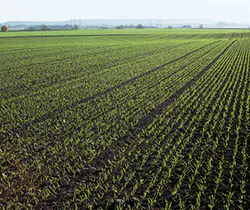
Flurtamone is a key ingredient of the products that farmers know as Bacara Forte®. It is a cereal herbicide for pre-emergence and early-post control of key weeds, particularly Apera species, e.g. Apera spica-venti. With the goal of enhancing farmer`s productivity, Fluratmone is an important element of Bayer`s Integrated Weed Management offering, resulting in customized agronomic solutions for optimized weed control and maximum yield protection.
Active Substance: flurtamone
Summary of the ecotoxicological studies - 1 - flurtamone
Summary of the ecotoxicological studies - 2 - flurtamone
Summary of the fate and behaviour in the environment studies - 1 - flurtamone
Summary of the fate and behaviour in the environment studies - 2 - flurtamone
Summary of the residues in or on treated products, food and feed studies - flurtamone
Summary of the toxicological and metabolism studies - flurtamone
Formulation: diflufenican + flurtamone SC 350 (100+250 g/L)
Summary of the ecotoxicological studies - diflufenican + flurtamone SC 350 (100+250 g/L)
Summary of the toxicological studies - diflufenican + flurtamone SC 350 (100+250 g/L)
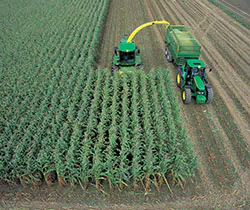
Foramsulfuron is a compound which is already successfully used in corn for many years. It controls a broad spectrum of important annual and perennial grass weeds and broadleaved weeds. Foramsulfuron is one of the most effective active ingredients for the control of Sorghum halapense. It is mainly used between 3 leave and five leave stage of corn. Important brand names are Monsoon/Equipe, Monsoon active (combination with Thiencarbazone-methyl, MaisTer (combination with Iodosulfuron-methyl)/MaisTer power (combination with Iodosulfuron-methyl and Thiencarbazone-methyl).
In addition to corn, the active has been launched 2018 in sugar beets in many countries in Europe. In combination with Thiencarbazone-methyl (Brand name CONVISO one) Formsulfuron is part of an innovative system for the weed control in sugar beets that are tolerant to this mode of action. By using this system, the farmer can reduce the number of his herbicides treatments used today by approx. 50%.
Active Substance: foramsulfuron
Summary of the ecotoxicological studies - foramsulfuron
Summary of the fate and behaviour in the environment studies - foramsulfuron
Summary of the residues in or on treated products, food and feed studies - foramsulfuron
Summary of the toxicological and metabolism studies - foramsulfuron
Formulation: foramsulfuron + isoxadifen-ethyl OD 45 (22.5 + 22.5 g/l)
Summary of the ecotoxicological studies - foramsulfuron + isoxadifen-ethyl OD 45 (22.5+22.5 g/L)
Summary of the toxicological studies - foramsulfuron + isoxadifen-ethyl OD 45 (22.5+22.5 g/L)

Glyphosate is a versatile herbicide that has been used for more than 40 years by farmers, land managers, gardeners, and others to simply, safely, and effectively control problematic weeds. Since the introduction in 1974, glyphosate-based products have become the most commonly used herbicides in the world because of the ability to control a broad spectrum of weeds, the extensive economic and environmental benefits, and the strong safety profile. In the 1990s, combining glyphosate with crops that could withstand applications of this herbicide transformed agriculture in many parts of the world and modern agriculture biotechnology began. Our portfolio of glyphosate-based products will continue to be a very important part of our integrated weed management (IWM) offerings.
Active Substance: glyphosate (2020: EU renewal of approval summary dossier documents)
Summary of the ecotoxicological studies - glyphosate
Summary of the fate and behaviour in the environment studies – glyphosate
Summary of the metabolism and residue studies – glyphosate
Summary of the toxicological and toxicological studies - glyphosate
Formulation: 360 g/L glyphosate acid (2020: EU renewal of approval summary dossier documents)
Summary of the ecotoxicological studies - 360 g/L glyphosate acid
Summary of the fate and behaviour in the environment studies - 360 g/L glyphosate acid
Summary of the metabolism and residue studies - 360 g/L glyphosate acid
Summary of the toxicological studies and exposure data and information - 360 g/L glyphosate acid
Glyphosate active substance and formulation: Access to study reports
-
The full 2020 glyphosate dossier is accessible via the website of the Glyphosate Renewal Group (GRG)
-
Glyphosate active substance: Access to Bayer Import Tolerance (IT) application

Iodosulfuron-methyl-sodium is a sulfonylurea herbicide for post-emergence use mainly in cereals and corn. It is effective against grass weeds e.g. Apera spica-venti, Lolium ssp., Phalaris spp. and as well as a wide range of broadleaved weeds e.g. Cirsium arvense, Galium aparine, Lamium spp., Matricaria chamomilla Stellaria media etc. .Iodosulfuron is a key component of brands like Hussar®, Sekator® and Atlantis®. It is an integral part of Bayer`s Integrated Weed Management program providing farmers with agronomic solutions for optimized weed control and maximum yield protection.
Active Substance: Iodosulfuron-methyl-sodium
Summary of the ecotoxicological studies - iodosulfuron-methyl-sodium
Summary of the fate and behaviour in the environment studies - iodosulfuron-methyl-sodium
Summary of the toxicological and metabolism studies - iodosulfuron-methyl-sodium
List of safety relevant documents October 2015
Formulation: Idosulfuron-methyl-sodium + mefenpyr-deithyl OD 400 (100 +300 g/l)

Isoxaflutole is a herbicide compound that has been successfully used for over 20 years and is a key tool of our portfolio in corn and sugarcane in Europe, North America and Latin America.
During the early phases of the development, corn reacts very sensitive on weed competition: Isoxaflutole which can be used in this early phase from pre-emergence of corn until 3 leaf stage. The compound has a very strong residual efficacy and is able to provide a season control of a number of the most important annual grasses (e.g. Echinochloa species) and annual broadleaved weeds. To complete the weed spectrum Isoxaflutole is used in tank mixture with other herbicides. After a longer-lasting period of drought, the compound can be reactivated after rainfall within 4 weeks after application.
Important brand names in Corn are Merlin®flexx/ Balance®flexx (combination with the Safener Cyprosulfamide), Adengo®/ Corvus® (combination with Thiencarbzone-methyl and Cyprosulfamide) and Lagon® (combination with Aclonifen). In sugarcane the lead brand is Provence Total®.
Active Substance: isoxaflutole
Summary of the ecotoxicological studies - isoxaflutole
Summary of the fate and behaviour in the environment studies - isoxaflutole
Summary of the residues in or on treated products, food and feed studies - isoxaflutole
Summary of the toxicological and metabolism studies - isoxaflutole
Formulation: isoxaflutole + cyprosulfamide SC 480 (240 + 240 g/l)
Summary of the ecotoxicological studies - isoxaflutole + cyprosulfamide SC 480 (240+240) g/L
Summary of the toxicological studies - isoxaflutole + cyprosulfamide SC 480 (240+240) g/L
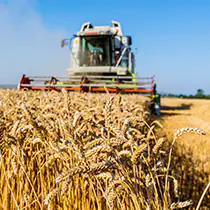
Mesosulfuron-methyl known under the Atlantis® brand family is a sulfonylurea herbicide for post-emergence use in Cereals. It is one of the leading solutions to control Alopecurus myosuroides and further important grass weeds in wheat, rye, and triticale. To enhance farmer’s productivity Mesosulfuron-methyl belongs to Bayer’s Integrated Weed Management programs delivering customized agronomic solutions for optimized weed control and maximum yield protection.
Active Substance: mesosulfuron
Summary of the ecotoxicological studies - mesosulfuron-methyl
Summary of the fate and behaviour in the environment studies - mesosulfuron-methyl
Summary of the residues in or on treated products, food and feed studies - mesosulfuron-methyl
Summary of the toxicological and metabolism studies - mesosulfuron-methyl
List of additional safety relevant studies
Formulation: iodosulfuron-methyl-sodium + mesosulfuron-methyl + mefenpyr-diethyl OD 42 (2+10+30 g/l)
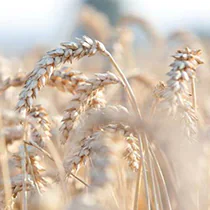
Propoxycarbazone – sodium is the active ingredient of Bayer´s cereal herbicide Attribut®, which is applied post-emergence in wheat, rye and triticale to control several important grass weeds such as Alopecurus myosuroides, Apera spica-venti, hard to control Bromus species and the perennial grass weed Agropyron repens. To maximize performance and to ensure sustainable future grass-weed control Propoxycarbazone – sodium is part of Bayer´s Integrated Weed Management Program.
Active Substance: propoxycarbazone-sodium
Summary of the ecotoxicological studies - propoxycarbazone-sodium
Summary of the fate and behaviour in the environment studies - propoxycarbazone-sodium
Summary of the residues in or on treated products, food and feed studies - propoxycarbazone-sodium
Summary of the toxicological and metabolism studies - propoxycarbazone-sodium
Formulation: Attribute SG70 (700 g/kg propoxycarbazone-sodium)
Summary of the toxicological studies - Attribut SG70 (700g/kg propoxycarbazone-sodium)
- Safety-relevant information published by the European Food Safety Authority (EFSA) - Register of Questions
- A guide to finding existing safety data (Crop Life International)
Further Reading about Glyphosate
- Let’s talk about glyphosate (Bayer)
- Glyphosate: The surprising benefits for biodiversity (Bayer)
- About glyphosate re-registration in the EU (Bayer)
- About the glyphosate re-registration in the EU (Glyphosate Renewal Group – GRG web site)
- European Commission: Glyphosate
- EFSA: Glyphosate
- German Federal Institute for Risk Assessment (BfR)
- US EPA: Glyphosate
Resource Library
Note: This website does not constitute a specific product advertisement, but only provides general comments and information to better understand the background of the study information offered on this website. As a result, the products which are mentioned are not registered in every country. National label instructions have to be read and followed. Use plant protection products safely. For further product information visit: https://www.bayer.com/en/agriculture








